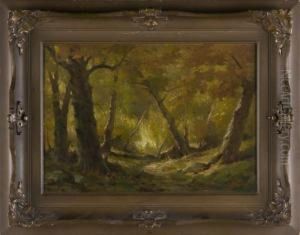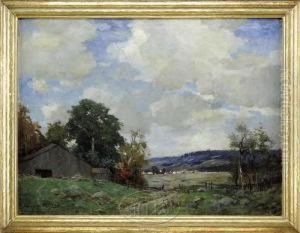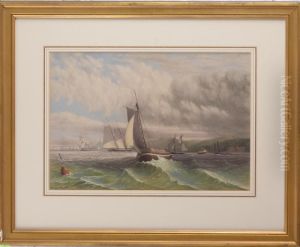Henry Parton Paintings
Henry Parton was an American landscape painter known for his serene and pastoral scenes. Born in Hudson, New York, in 1845, he developed an interest in art at a young age. He was the younger brother of the artist Arthur Parton, who was also a significant influence on his development as an artist. Both brothers would eventually become associated with the Hudson River School, a mid-19th century American art movement embodied by a group of landscape painters whose aesthetic vision was influenced by romanticism.
Henry Parton's work often depicted the beauty of the American Northeast, particularly the Catskill Mountains and the Adirondacks. His style was characterized by a fine attention to detail and a tranquil representation of nature. Parton received his formal art education at the National Academy of Design in New York City, where he would later become an associate member in 1868 and a full Academician in 1884. Throughout his career, Henry Parton's paintings were exhibited at the National Academy of Design and the Boston Art Club, among other institutions.
During his lifetime, Parton was well-regarded for his contributions to American landscape painting. He was part of the second generation of Hudson River School artists, a group that maintained the tradition of the earlier masters like Thomas Cole and Asher B. Durand while also incorporating their own interpretations and techniques. Parton's paintings are noted for their luminous quality and the peaceful harmony of his compositions. His works are part of several public collections, including at the Metropolitan Museum of Art in New York and the Smithsonian American Art Museum in Washington, D.C.
Henry Parton passed away in 1908. Although not as widely known today as some of his contemporaries, he remains a respected figure in the history of American art, with his paintings continuing to be appreciated for their quiet beauty and technical skill.


